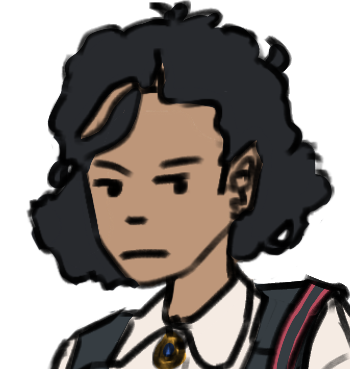NEW Story: Cocktail
The Vekllei Crown — coins of a moneyless country

This article is not part of Vekllei canon. It may be old, obsolete or just a bit of fun.
✿ This article was featured in Issue #2 of the Atlantic Bulletin
Vekllei, legendarily, does not use circulate currency. Goods and services are moved and offered arbitrarily, provided amply in abundance. Anything that is not abundant is manufactured and distributed directly under the control of a bureau, which is a trade organ responsible to the affairs of the country. At no point do coins or paper currency change hands in the day-to-day affairs of the country.
In this sense, Vekllei is usually described as “moneyless” — yet it does in fact have a currency. The Vekllei Kroner, or “Crown,” is hundreds of years old, and Vekllei still operates a mint for currency. At any time, a Vekllei person can write to the National Mint and order a set of coins, like the ones pictured above. So what is going on here?
Although the Kroner has not been used since 2022, after the last village in Stochi returned coinage to the Mint, it continues to exist to this day as a gold-backed currency in the International Market, through which Vekllei trades with other countries. The physical coins, produced mostly as a novelty in the tradition of mayaesdiou (medallions, or small metal pieces commonly collected and given in Vekllei), are a physical coinage of the International Market. The coins also operate as a form of bullion, or wealth reserve, since each coin is worth exactly its face value in gold. Since the International Market is completely closed and independent of the domestic economy, its value is controlled directly by the so-called Government Bank. It is one of the few gold-backed currencies in a developed nation today.
To further complicate things, there are actually two different Kroner in Vekllei. There is the Vekllei Kroner, which represents the International Market, but there is also a seperate Government/State Kroner, which is not minted and used only as an investment mechanism, backed by government “white bonds” which are usually measures of labour-hours or refined materials. It is, in a sense, a fiat currency alongside a gold-backed currency.
They exist independently because they are used for two seperate purposes. The Vekllei Kroner is used a wealth reserve and bullion, and also represents the collective wealth of the Vekllei people. Each citizen, in theory, is entitled to an equal share of the Government Bank, although it can only be withdrawn as currency in specific circumstances. Vekllei also holds substantial amounts of foreign currency in the Government Bank and Vekllei Kroner, which is used to invest and stabilise holdings and capital in foreign countries. The Government Kroner, on the other hand, is used as an investment mechanism abroad, usually in support of infrastructure. It is also used to acquire foreign currencies through investment in foreign capital.
Despite having two currencies, neither the “Vekllei Crown” or the “Government Crown” are used in the domestic economy in Vekllei, which is autonomous and not subject to a central bank. So it is that Vekllei’s currency is both little more than a novelty and essential to the function of the country in a world still ruled by money.
In the coinage depicted above — 8 coins are minted in Vekllei today. They were designed in 2015, in the year of independence. They represent eight core values in the country.
The “small crowns,” worth 1VK and 10VK respectively, represent fraternity and liberty, two founding elements of the Vekllei constitution. The 50VK coin is plated in silver and has a small ruby inset. Rubies are used to represent energy, in this case, the vitality of the spirits, which dominate Upen and the Vekllei landscape. The 100, 200, 500 and 1,000VK coins represent different landscapes of the country. As a volcanic island nation, the ocean (100) and landscape (200) coins are fairly straightforward. The humanity coin (500) represents the Vekllei people and ancestry — note how humans are placed alongside other natural forces. The flower coin (1,000VK) represents the flowers of the country, which are important spiritually and have formed part of the Vekllei identity. Vekllei has the most flowers per capita in the world. The final, larger 10,000VK coin represents the previous seven together, as a total sum of Vekllei landscape and identity.
To answer Tzipora’s question — a bottle of fizzy drink cost about 2VK in the waning days of coinage in the early 2020s.
